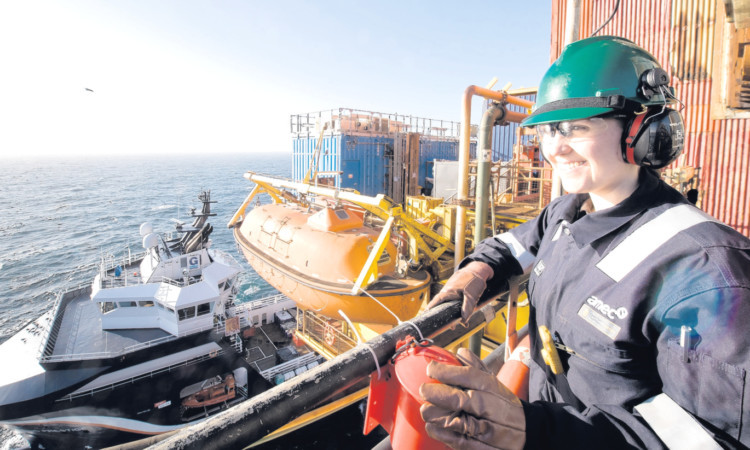Britain’s offshore workforce grew by 8.6% last year, despite pressures on the sector from helicopter safety issues and a fall in the price of oil.
A study by industry body Oil & Gas UK found the number of people working on platforms in the North Sea had hit its highest recorded level, with a total of almost 62,000 flying out for at least one night during 2013.
The workforce is getting younger, with a near 15% hike in those aged between 23 and 28, and the average age of offshore workers falling to below 41.
But the study also found massive under-representation of women in the offshore workforce at a time when the sector is crying out for skilled new recruits.
The trade body said the rate of increase was stronger than had been anticipated given the effect on transport capacity following a ditching in October 2012 and a suspension of services following a fatal crash off Shetland in August last year.
It also hailed the impact of billions of pounds of investment in new projects during a year in which the average price of a barrel of oil fell $3 to $109.
“Between 2010 and 2013, there was a sharp rise in the number of offshore personnel.
“However, upon analysing the data, there does not appear to be a significant increase in any particular discipline or area of offshore work,” the demographics report said.
“The rise in manpower could be attributed to maintenance programmes, upgrades and key projects taking place in 2013, together with record capital investment of £14.4 billion in the industry.”
Oil & Gas UK employment and skills manager Alix Thom said the statistics helped to dispel the “common misconception” of an ageing workforce.
“However, this good news must be considered against the 8% reduction in production seen in 2013 and the fact that there has been a slight drop in the proportion of female employees relative to the total offshore population,” Dr Thom said.
“Women now comprise 3.6% of the total offshore population, representing a decrease of almost 0.2% since 2012.
“Given the current level of demand for skilled employees, and the high level of activity on the UK Continental Shelf, it is in the industry’s interest to increase its focus on tackling this lack of gender diversity as it represents a significant, but not fully utilised, pool of talent.”
The number of so-called “core” staff who spend more than 100 nights offshore each year rose 7.7% to 27,750, accounting for 6% of the UK industry’s workforce.
The core figure represents 45% of the total employment in the sector and saw a 7.7% increase on the same measure in 2012. Of the core, half visited a single offshore site, with 72% working for a single operator.
Just more than four-fifths were British, with the largest proportion of non-British workers coming from Norway.
But the proportion of female workers in the workforce, 30% of whom are in catering, fell marginally on the previous year’s level.
